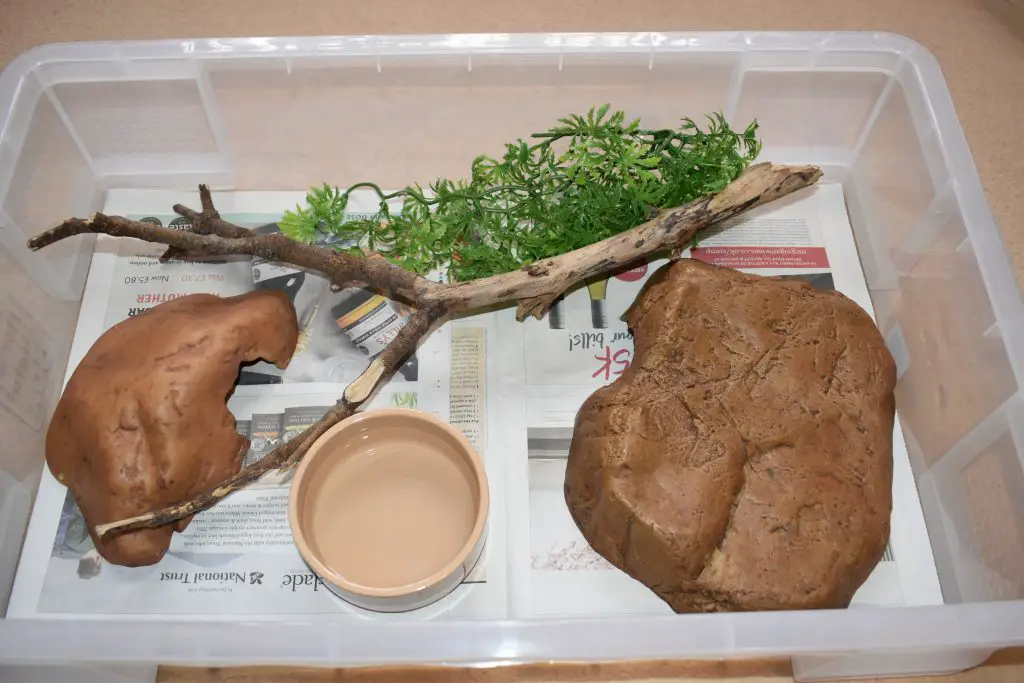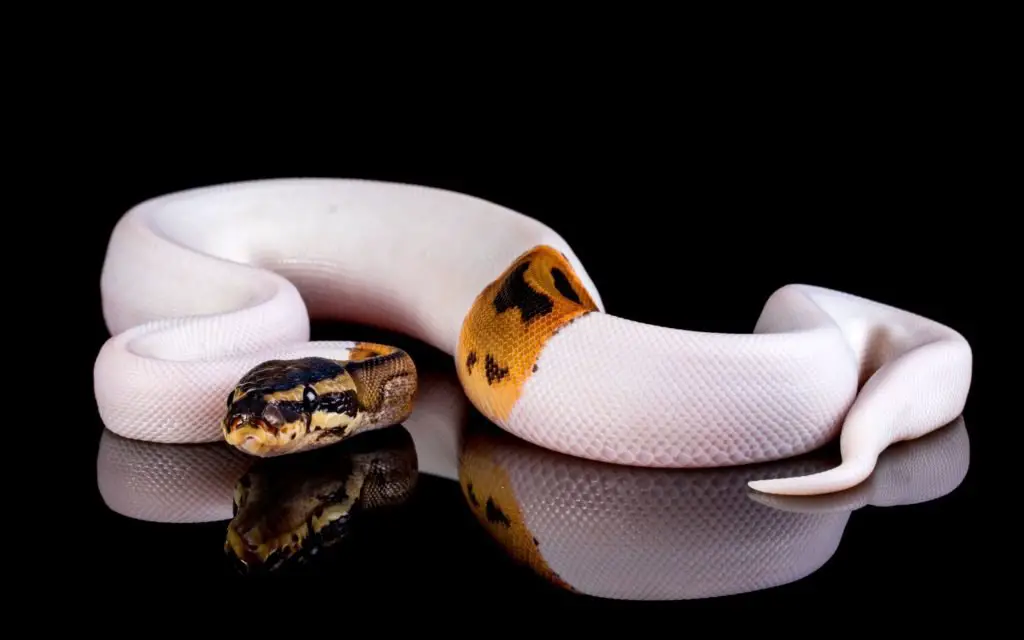As a devoted ball python enthusiast who’s spent years keeping and breeding these magnificent creatures, I’ve come to understand and appreciate the nuances of their care. A critical aspect of ball python husbandry is creating a suitable environment. It should be safe, and reminiscent of their natural habitat in terms of heat and humidity.
But before we get too far into this topic, there’s something important I need to say. Every day, I see people posting material about why they hate racks, or hate vivariums, or hate tubs, etc…
Well, I’m going to go ahead and tell you to completely ignore people’s opinions if they seem a little too strong. Usually someone with a REALLY strong opinion is either biased, or trying to sell you something.
Just choose a type of enclosure that helps you to achieve the temperature, safety, and humidity your snake needs. If that’s a tub great, if it’s a pvc enclosure that’s also great – just focus on making it work! Any one of the options we discuss here can be the right choice – ultimately the decision is yours. I’m just here to help you make an informed decision.
Types of Enclosures Available
There are a myriad of choices when it comes to housing a ball python:
- Racks: Extremely convenient if you plan on breeding, but can be expensive to buy with larger tubs.
- Glass Terrariums: Popular for their transparency and viewing pleasure. However, they might require modifications for humidity control.
- PVC Cages: Designed specifically for reptiles, these enclosures maintain temperature and humidity levels efficiently.
- Plastic Tubs: Not the most aesthetically pleasing, but highly functional especially for breeders.
- Wooden Enclosures: Aesthetic but can be heavy and challenging to clean.
- Mesh-top Enclosures: Excellent for ventilation but may require modifications for humidity maintenance.
Ball Python Enclosure Ideas
Creativity is your best friend here. Let’s take a moment to think about how you could adapt or modify each type of enclosure to make it more interesting, both for you and the snake.
- Racks: get a rack with the largest tubs possible (bigger than V70). Add a window in the front for viewing, two hides (like the resin Exo Terra Caves), some fake plants, and low branches. All of a sudden, you’ve got a rack that provides enrichment, but still saves space compared to having several vivariums.
- Glass Terriums: To raise the humidity, you can cover two-thirds of the top with plastic. You can also add a nice jungle-themed backdrop to make it look a little wild. A good idea would be to cover three sides of the tank with backdrops to make your Ball Python feel safer. Add two or three hides, and get some plastic plants that stick to the glass with suckers.
- PVC cages: These are large, and offer a lot of options. My suggestion is to go wild – adding branches, fake plants, and several hiding places. You can also add decorations and cork bark to the bottom for additional places to explore. Be sure to use a humidity-retaining substrate like cypress mulch, orchid bark, or coco chips to keep it high enough.
- Plastic tubs: Do exactly what I’ve just mentioned for racks and pvc setups. The only difference here is that you can buy opaque plastic tubs. These aren’t great for viewing, but the snakes feel safe (they feed extremely well in these setups).
- Wooden/mesh top enclosures: for a wooden enclosure apply the same ideas as for a pvc one. Most mesh top enclosures are glass, some follow the same ideas as for glass terrariums.
Ball Python Enclosure Kits
There are a lot of Ball Python enclosure kits available. The only problem is that some are wayyy too expensive, and others are just plain useless.
An ideal kit should contain:
| Item | Purpose |
| Substrate | Floor lining (e.g., cypress mulch, coconut husk) |
| Heat source | Under tank heaters or ceramic heat emitters help thermoregulation |
| Thermostat | Regulate temperature |
| Thermometer | Check temperature |
| Hygrometer | Monitor humidity levels |
| Hides (at least 2) | Provide security and privacy |
| Feeding tongs | To safely feed your snake |
| Water dish | Hydration and occasional soaking |

Ball Python Enclosure Setup
Setting up your enclosure is a step-by-step process:
- Substrate Layering: Ensure it’s thick enough for comfort but not too deep.
- Heat Source Placement: Usually on one side to create a temperature gradient.
- Setting up Hides: One on the cooler side and one on the warmer side.
- Water Dish: Ideally placed in the middle or slightly towards the cooler side.
- Thermometer & Hygrometer: Proper placement ensures accurate readings.
40 Gallon Ball Python Tank
This size is ideal for an adult ball python, offering ample space for movement, exploration, and enrichment. It can comfortably fit all necessities, including multiple hides, a large water dish, and decor.
Adult Ball Python Enclosure
While juveniles can start in smaller enclosures, an adult ball python requires at least a thirty inch long setup – preferably more. What you may find is that some adults get really lazy, and just can’t be bothered climbing or doing much at all (I have a couple like this).
Others do stay active though, particularly males. For these guys, the 40 gallon (150 liter) size enclosure is a good option. Just remember that larger enclosures must always provide adequate hiding places so that your pet feels safe.

The “Best” Ball Python Enclosure Setup
Obviously the “best” setup is a matter of opinion. If you listen to most youtube channels or blogs you’ll soon see that the “best” setup is always the most expensive one, because it’s the one that makes them the most money! Sorry for spilling the beans, guys…
What I want to hammer home is that the best enclosure is always the one that fulfills the needs of the animal. It really doesn’t matter what we think, or what we try to market, for that matter. Don’t forget that the most important factors are heat and humidity, but the others on the list below are also worth taking into consideration.
A good enclosure is without a doubt one that achieves the following things:
- Temperature: A gradient from 80-81F (27C) (cool end) to 90-91F (32C) (warm end).
- Humidity: 60-65%, with occasional spikes up to 70-80% during shedding.
- Lighting: Natural light cycle, no special UVB required.
- Enrichment: Varied terrain (objects to crawl over), branches for minor climbing, and multiple hiding spots.
Ball Python Tank Decor
Tank decor isn’t strictly necessary for the survival of your pet, but it certainly makes the setup a lot nicer to look at. There’s also the non negligiable fact that varied tank decor can provide enrichment for reptiles, so look as it gives them additional things to explore, climb, or hide in.
Enhance your python’s environment with:
- Plants: Fake or safe real plants like pothos or ferns.
- Branches: For minor climbing and exploration.
- Rocks: Great for basking and added aesthetics.
- Backgrounds: Can be used for added aesthetics and to provide a sense of security.
Ball Python Enclosure Size
Here are some general guidelines for minimum enclosure sizes:
- Hatchlings: 12 inch (30cm) long terrarium, a 5-10 US gallon (19-38 litre) glass tank, or a plastic tub with equivalent floor space.
- Yearlings/subadults need an 18-24 inch (45-60cm) long terrarium, a 15-20 US gallon (19-38 litre) glass tank, or a plastic tub with equivalent floor space.
- Adults will need a 3-4 foot (90-120cm) long vivarium, a 40-50 US gallon (151-190 litre) glass tank, or a similarly sized plastic tub.

Making Sure the Enclosure is Safe
One thing I’ve seen a lot of over the years is Ball Pythons that have been injured in their enclosure by either rubbing their noses or burning themselves. Both of these issues are completely avoidable.
Remember, the enclosure should be a space where your pet is 100% safe, 100% of the time. Let’s let look a few tips to prevent injury:
- Secure Lids: Prevents escapes.
- Avoid Sharp Objects: Check decor for sharp edges.
- Check Heat Sources: Ensure they’re functioning properly and not burning the snake. Heat bulbs and ceramic heat emitters must be placed inside guards that prevent the snake from touching them. All heating elements must be used with an appropriate thermostat.
- Clean Regularly: Remove waste promptly and deep clean every month.
- Feed regularly: a very hungry snake is more likely to nose rub.
- Fresh Water: Always provide clean water. Again, a thirsty snake may also nose rub.
Choosing the right Ball Python enclosure: Conclusion…
Creating the perfect enclosure for your ball python is an art and science combined. While we aim to mimic their natural environment, it’s essential to remember that in captivity, safety and health come first. By carefully selecting and setting up their habitat, we offer them not just a cage, but a home.
If you’d like to learn more about simulating the natural environment of this species, check out my article on Ball Python natural habitat.

